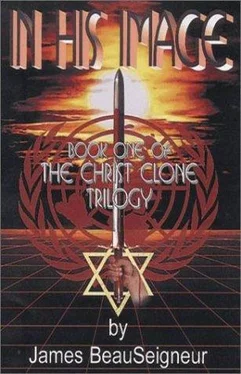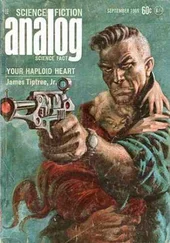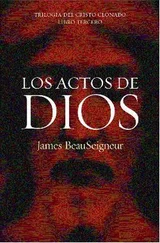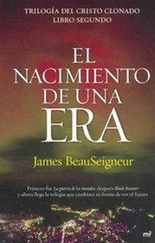"My theory is that the Ark was hidden somewhere in the tunnels beneath the Temple to protect it from the Romans. If so, very few people would have known about it, but certainly the High Priest would have known. And if the High Priest knew, it's likely that his servant – that is, Malchus – would have known as well."
Decker and Tom nodded tentative agreement.
Rosen continued. "Okay, now let's move ahead in time about eleven hundred years, during the time of the first Crusade. Not many people realize that the Crusaders, who were mostly French, were quite successful in their first attempts to take the Holy Land from the Muslims. They even succeeded in capturing and holding the city of Jerusalem and establishing a French-born king over the city. Shortly after that, an order of knights known as the Knights Templar was formed in Jerusalem."
"I've heard of them," Decker offered. "They were pretty powerful, if I remember correctly."
"Yes, but not at first. The stated purpose of the Knights Templar was to protect Jerusalem and to aid European pilgrims coming to the Holy Land. This was a rather unrealistic undertaking, since originally there were only six or seven members in the order. And they were very poor. Ironically, poverty was one of their vows. I say ironically because somehow over the next hundred years, this small group of knights not only grew in number, but grew unbelievably wealthy. In fact, these men became the first international bankers, loaning money to kings and nobles throughout Europe. How they acquired their immense wealth has been the subject of great speculation."
"And you think you know the answer?" Decker urged.
"I think so, and if I'm right, it explains a lot more. You see, the headquarters for the Knights Templar was in the Mosque of Omar, that is, the Dome of the Rock, which sits on the site of the old Temple. It has been suggested that the knights excavated the tunnels beneath the Mosque and found the treasures of Solomon's Temple and that was the source of their wealth."
"But how does the Shroud of Turin fit into all this?" Tom asked.
"God had Moses build the Ark," Joshua continued, "as a container for certain sacred objects: the stone tablets on which God wrote the ten commandments; the first five books of the Bible written by Moses; a container of manna, which God caused to fall from the sky each morning for the Hebrews to eat while they were in the desert; and one other thing, Aaron's staff, which God had miraculously caused to sprout, bud, and bear almonds. Those things were placed in the Ark as a witness to later generations of God's covenant with Israel, and of his power.
"But something always struck me as odd about that list of items. Stone tablets will last forever. Protected in the Ark, the parchment that Moses used to write the first five books of the Bible might last for thousands of years. But the container of manna, under normal conditions, would turn to dust within just a matter of months. And Aaron's staff – though it might survive the centuries as a simple wooden staff – without the budding and the almonds, would not be much of a witness of God's power. That's when it occurred to me that perhaps the power of the Ark is greater and quite different than we may have realized. For instance, think about the staff for a minute. How tall do you imagine Aaron's staff would have been?"
"Oh, gee," Tom said, "I hate to show my ignorance, but all I can think of is another movie, the Ten Commandments? In that movie it seemed like Moses' staff was about six or seven feet tall."
"Well, I can't say much for the reliability of your sources, but I think that's a fair guess," said Joshua. "Shepherding hasn't changed much over the centuries, and all the shepherds' staffs I've ever seen are about that long. So when you think about Aaron's staff, with the limbs and sprouts and almonds growing from it, it would have had quite a large diameter. But," said Joshua, about to make his point, "based on a standard 18 inch cubit, the absolute longest that staff could have been and still have fit in the Ark is four feet, nine inches, and that's without any branches."
Tom tried but didn't catch Joshua's point. "So?"
"Well, think about it. The only way that a six to seven foot shepherd's staff could have fit into the Ark is if the inside dimensions of the Ark are not limited by the outside dimensions."
Tom's eyes widened. "Oh, I get it! Sort of a 'Mary Popping' effect," he said, referring to another movie. "Where Mary Poppins was able to put all sorts of things in her carpetbag that were much bigger than the bag itself."
Decker and Joshua laughed.
"Exactly," Joshua answered. "If the container of manna and Aaron's staff were to be a witness to future generations of God's power, there must be some miraculous, preservative power to the Ark. I'm sure you know that time is generally referred to as the fourth dimension – with length, width, and height being the first three. What I'm suggesting is that perhaps inside the Ark there is a total absence of dimensions: no length, width or height (which would explain how Aaron's staff could fit); and no time (which explains how the manna and the staff could be preserved)!"
Suddenly it all became clear to Decker just what Joshua was getting at. "So you think the servant of the High Priest put the Shroud in the Ark where it remained until it was taken out, over a thousand years later, by the Knights Templar when they discovered the Temple treasures!"
"Exactly!" Joshua said. "Of course, it's mostly just conjecture – but it does offer a unified theory that would provide a consistent explanation for a number of unanswered questions. Besides, it makes sense that the Shroud – the only physical evidence of Yeshua's resurrection and the consummation of God's new covenant with his people – would be kept in the Ark of the Covenant together with the evidence of God's old covenant."
"Wait a second, wait a second," Tom said, trying to catch up with the thoughts of his companions.
"Don't you see?" said Decker. "That's why the Shroud flunked the carbon 14 dating. For over a thousand years it totally escaped all deterioration and aging while it was inside the Ark!"
"Holy sh… " Tom caught himself, but his excitement showed in his raised voice and many of the nearby tourists and worshipers turned to stare at him disapprovingly. "That's incredible!" Tom said in a more controlled voice. "But what about the Knights Templar? Is there any connection between them and the Shroud of Turin?"
"Well," Joshua answered, "as far back as it can be traced, the first person who we can positively prove had the Shroud was a man in France named Geoffrey de Charney. Some years later his family gave the Shroud to the House of Savoy, who later moved it to Turin, Italy."
"So is there a link between de Charney and the Knights Templar?" Decker asked.
"As a matter of fact," Joshua glowed, having been asked the question he was hoping for, "there is."
"So what is it?" Decker asked, when he felt Joshua's pause had gone on long enough.
"Well, as we said, the Knights Templar became very powerful throughout Europe. But then the King of France decided he no longer wanted them around. He accused their members of hideous sins and atrocities. They were arrested and tortured to force them to confess to his trumped up charges. Those who confessed were locked away in prisons; those who refused were tortured to death or burned at the stake. Two of the last to be executed in this way were Jacques de Molay, the Grand Master of the Knights Templar, and Geoffrey de Charney, Preceptor of Normandy. That Geoffrey de Charney apparently was the uncle of the later Geoffrey de Charney, who was the first person that we can positively determine had possession of the Shroud."
"Incredible!" said Tom.
"Additionally," Joshua said, "one of the accusations against the knights was that they worshiped the image of a man."
Читать дальше












